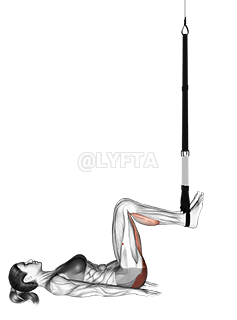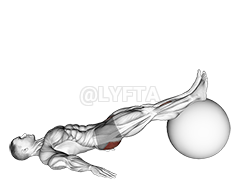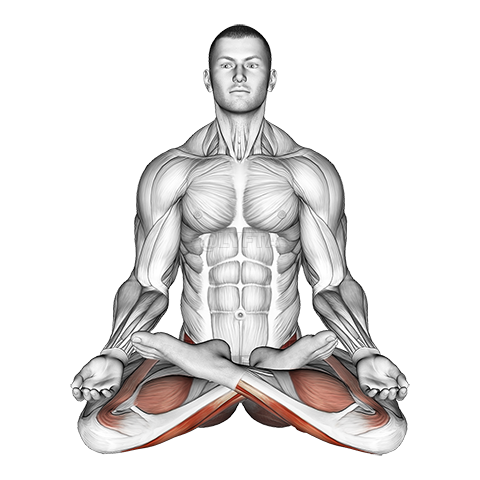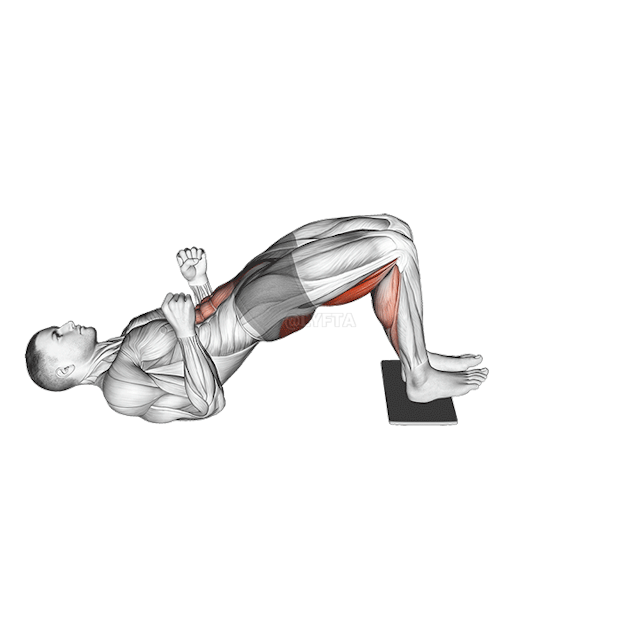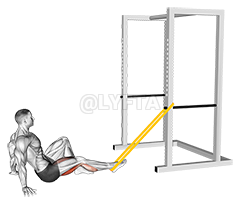
45 degree hyperextension
Exercise Profile
Related Exercises:
Introduction to the 45 degree hyperextension
The 45-degree hyperextension exercise is a strength training activity primarily targeting the lower back, glutes, and hamstrings, promoting overall core stability and back health. It is suitable for individuals at all fitness levels, from beginners to advanced, as it can be easily modified to match one's strength and ability. People would want to do this exercise to improve their posture, alleviate lower back pain, enhance athletic performance, and reduce the risk of back injuries.
Performing the: A Step-by-Step Tutorial 45 degree hyperextension
- Keep your body straight, cross your arms over your chest or place your hands behind your head, then bend forward at the waist as far as you can while keeping your back flat.
- Slowly raise your torso until your body is in a straight line again, focusing on using your lower back muscles to perform the movement and avoiding using your hips to lift your body.
- Hold at the top of the movement for a couple of seconds to maximize the contraction in your lower back.
- Lower your body back to the starting position, repeating for the desired number of repetitions.
Tips for Performing 45 degree hyperextension
- Controlled Movement: Avoid jerky or rapid movements. Instead, perform the exercise with slow and controlled motion. This will help engage your muscles more effectively and reduce the risk of injury. A common mistake is to use momentum rather than muscle strength, which can lead to poor form and potential injury.
- Maintain Neutral Spine: It's crucial to keep your spine neutral throughout the exercise to prevent lower back injury. Avoid rounding or excessively arching your back. Instead, maintain a slight natural curve in your lower back.
- Range of Motion: Don't overextend your body at the top of the movement. A common mistake is to
45 degree hyperextension FAQs
Can beginners do the 45 degree hyperextension?
Yes, beginners can do the 45 degree hyperextension exercise, but it's important to start with lighter weights or even just body weight, and focus on form and control to prevent injury. It's also recommended to have a trainer or experienced individual guide you through the process to ensure you're doing it correctly. Remember to listen to your body and stop if you feel any discomfort or pain.
What are common variations of the 45 degree hyperextension?
- Weighted 45 Degree Hyperextension: This variation involves holding a weight plate or dumbbell to increase the resistance and challenge of the exercise.
- Banded 45 Degree Hyperextension: In this variation, a resistance band is used to add an extra level of difficulty to the movement.
- Single Leg 45 Degree Hyperextension: This variation is performed by lifting one leg off the bench during the exercise, increasing the intensity and targeting each side of the lower back individually.
- 45 Degree Hyperextension with a Twist: This variation adds a rotational movement at the top of the exercise to engage the obliques and other core muscles.
What are good complementing exercises for the 45 degree hyperextension?
- Glute bridges can also complement 45 degree hyperextensions, as they primarily target the glutes and hamstrings, reinforcing the strength and stability gained from hyperextensions and promoting better posture and alignment.
- Lastly, bird dogs are an excellent exercise to pair with 45 degree hyperextensions, as they not only strengthen the lower back and core, but also improve balance and coordination, which can enhance the effectiveness of the hyperextension movements.
Related keywords for 45 degree hyperextension
- Bodyweight hip exercise
- 45 degree back extension
- Hyperextension workout
- Bodyweight fitness for hips
- 45 degree hyperextension exercise
- Bodyweight hip strengthening
- Hyperextension for hip muscles
- No-equipment hip exercise
- 45 degree bodyweight workout
- Hyperextension hip workout
